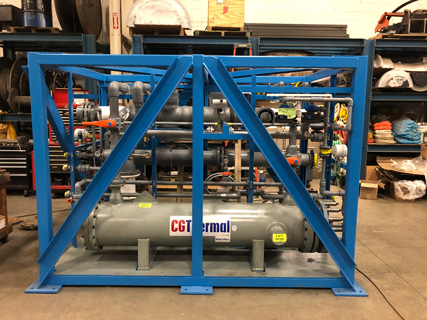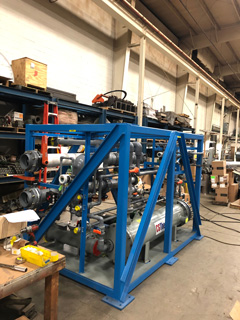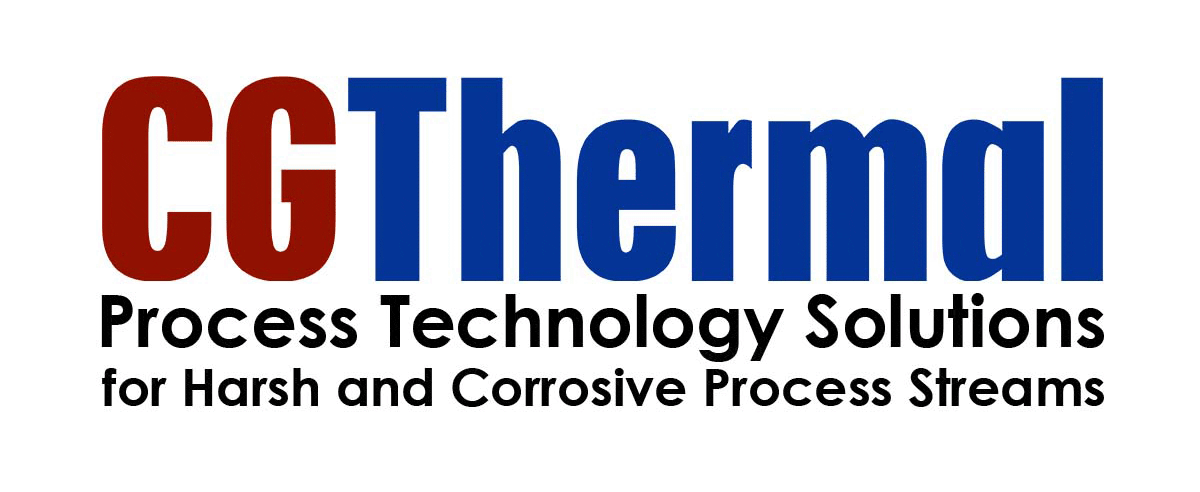Project Background

Since the 1970s, Teckomatorp, Sweden has been plagued with environmental pollution. BT Kemi, a company that produced pesticides, had buried barrels containing toxic chemicals in the ground, resulting in nearby residents falling ill. Initial cleanup efforts in the 1980s proved ineffective, but the Board of the BT Kemi Remediation project sought to implement more successful remediation strategies. While the remediation of the northern area was completed in 2009, the remediation of the southern area was not approved to start until the summer of 2020.
The remediation for the southern part primarily involved thermal in-situ treatment. Heater wells placed in the ground would vaporize the contaminants in the soil, allowing them to be extracted and collected above ground. This method enabled highly contaminated soil to be remediated in-situ without excavation. Some of the less contaminated areas were to be dealt with using excavation methods.
The Problem

The CG Thermal team was approached with a request for a graphite heat exchanger, but the user soon realized that the CG Thermal team had much more to offer the project. There were several design and manufacturing challenges associated with developing an appropriate solution for this customer. For example, the system had to be able to withstand:
- 24/7 operation for up to 10 months with tight process control
- Installation in a remote location
- Fitting into standard size overseas shipping containers
The high-profile nature of the project also meant stringent design specifications and tight manufacturing schedules. Further complicating the project were ill-defined initial process requirements, little to no initial control loop descriptions from the customer, and involvement from multiple international parties.
The Solution
Equipped with extensive experience designing and manufacturing heat/mass transfer equipment, our team was well-equipped to overcome the above challenges and develop an effective solution for the customer. It included the following members:
- Senior Process Specialist: responsible for process system concept, thermal/mass transfer calculation, and material specification
- Thermal and Process Design Engineer: responsible for assisting specialist in the design, detail, layout, and drawing of a turnkey system
- System Project Manager: responsible for overseeing all aspects of the fabrication process
- Controls Specialist: responsible for designing and specifying the control loop
- Assembly Technicians: responsible for assembling the skid, including piping, wiring, and controls
Some of the capabilities applied by the CG Thermal team for the project include:
- Material selection. Selection of highly corrosion-resistant materials for the construction of all system components.
- Process simulation and modeling. Flow diagrams and equipment designs.
- Structural engineering. Steel structure design according to applicable codes.
- 3D modeling and planning. Equipment and piping layouts.
- Manufacturing. Fabrication and assembly of equipment in steel structures to fit inside the shipping containers.
- Process automation. Design and installation of appropriate instrumentation, wiring, and control documentation.
- Field start-up assistance. We helped the customer set-up equipment in the field, configure their controls, and start the system.
The final equipment assembly consisted of graphite heat exchangers, scrubber towers thermoplastic piping, lined steel pumps, and instrumentation, all of which were made from corrosion-resistant materials that were compatible with the aqueous HCl used for the remediation operation and built to the relevant standards and requirements (e.g., local and EU regulations for structural design and ASME SEC VIII). It was designed to work as such:
- Impervite graphite heat exchanger condenses the HCl entrained vapor generated during soil remediation.
- Remaining vapor with trace amounts of HCl is fed into two (2) FRP scrubbing modules and a pump/drying module before it enters the system compressor.
The Impervite graphite condenser offers thermal efficiency and 100% corrosion resistance. The compact and modular design allows all of the components to be stored in standard shipping containers during transit and when not in use. A uniquely designed process automation arrangement addressed the process challenges, including the highly variable feed composition and the need for quick switching capabilities between parallel systems.
The Results

We delivered a complete solution within six months, which was three weeks less than the quoted lead time. Upon completion of the project, the customer expressed gratitude for our team’s transparency and close collaboration during the design and fabrication stages. They had realized early on in the design process that our extensive experience could help them avoid major design and fabrication pitfalls. By keeping them well-informed of the project status in weekly meetings, we enabled them to focus on other aspects of the project.
Working With CG Thermal
If you need thermal/mass transfer system solutions, turn to the experts at CG Thermal! Our experience and expertise in the design and manufacture of heat exchangers and process systems enable us to create solutions for some of the most complex or unique industrial challenges. We can deliver an effective and efficient turnkey system that fully meets your needs within your timeline. To learn more about our products and services and how they can benefit your operations, contact us today or browse through our past projects.



